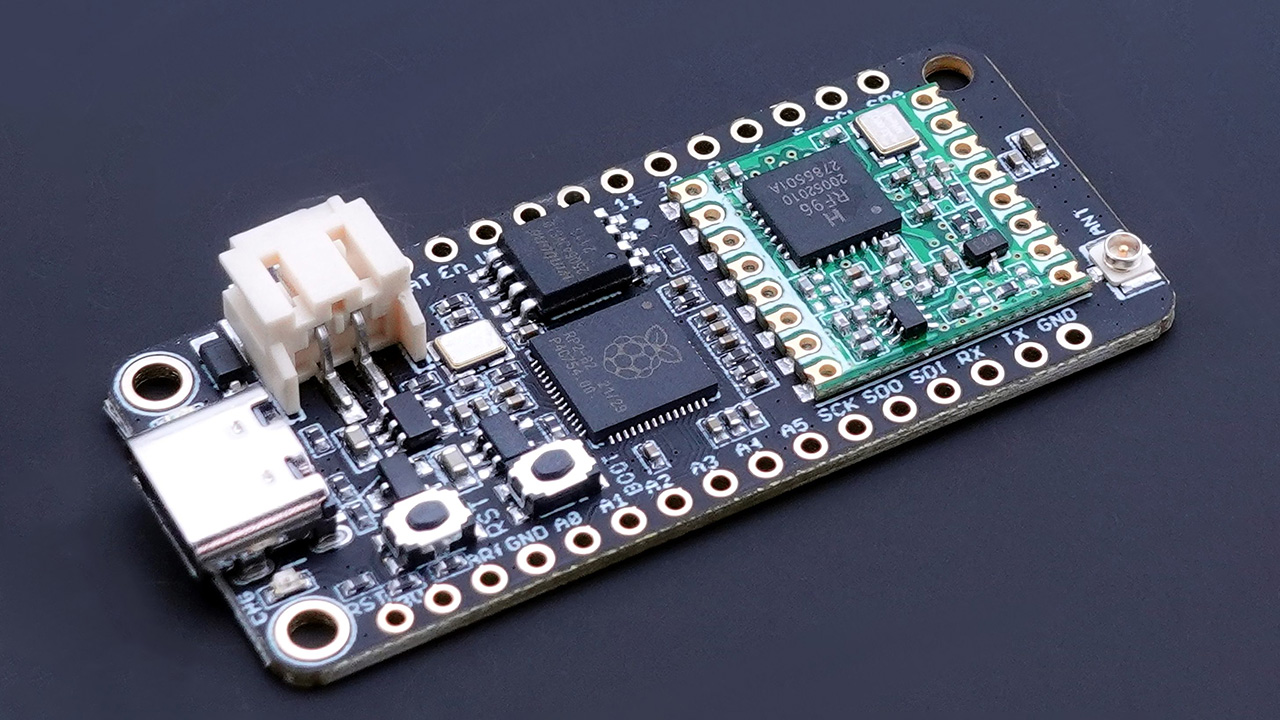Raspberry Pi Pico's RP2040 Gains Long-Range Radio

If the built-in Wi-Fi of the Challenger RP2040 board didn’t have the kind of range you were looking for in an IoT or home automation project, Invector Labs has you covered with its new LoRa model.

With a range of 15 miles, if you have line-of-sight, the RFM95W radio transceiver module from Hope RF gives it a touch more communication distance than Wi-Fi when in LoRa mode, which also gets you data transmission at 37.5kbps. It’s connected to the RP2040 SoC via the GPIO's SPI channel, with an antenna connected by a U.FL connector. Should you wish to step up the power, bandwidth rises to 250kbps in FSK mode.
The new Challenger board, compatible with the Adafruit Feather format as well as CircuitPython and MicroPython, retains the RP2040 of the original Challenger, but loses Wi-Fi compatibility completely in favor of the longer-range system. The surprisingly long range comes from a combination of a high-sensitivity crystal and an integrated +20dBm power amplifier. As LoRa trades transmission speed for range, don’t expect to be getting the best bandwidth at the greatest distances. A typical LoRa device achieves up to three miles in urban areas, and up to 10 miles or more in rural areas with line of sight.
Also new since the Wi-Fi version a 2.0mm JST connector for rechargeable LiPo batteries, and an internal battery charger circuit that allows charging over USB. There's a Type-C USB port for both power and communication needs, and the tiny board weighs just 0.009kg (0.317 ounces) and measures 5.07 x 2.28 x 0.72 cm (1.96 x 0.89in x 0.28 inches).
Programming the board is made possible via CircuitPython, MicroPython and an Arduino library developed by Earle F. Philhower.
LoRa is a proprietary data transmission protocol owned by Semtech which uses license-free sub-gigahertz radio frequency bands such as 865–867 MHz and 2.4GHz. Adafruit already has a board that uses it, the RFM95W, which has been used in projects such as model rocket telemetry.
The Challenger RP2040 LoRa is available from the Invector Labs Store, but was out of stock at the time of writing. Other versions of the board include one with LTE, and one with no wireless abilities, but retaining the LiPo battery charger circuit.
Get Tom's Hardware's best news and in-depth reviews, straight to your inbox.

Ian Evenden is a UK-based news writer for Tom’s Hardware US. He’ll write about anything, but stories about Raspberry Pi and DIY robots seem to find their way to him.